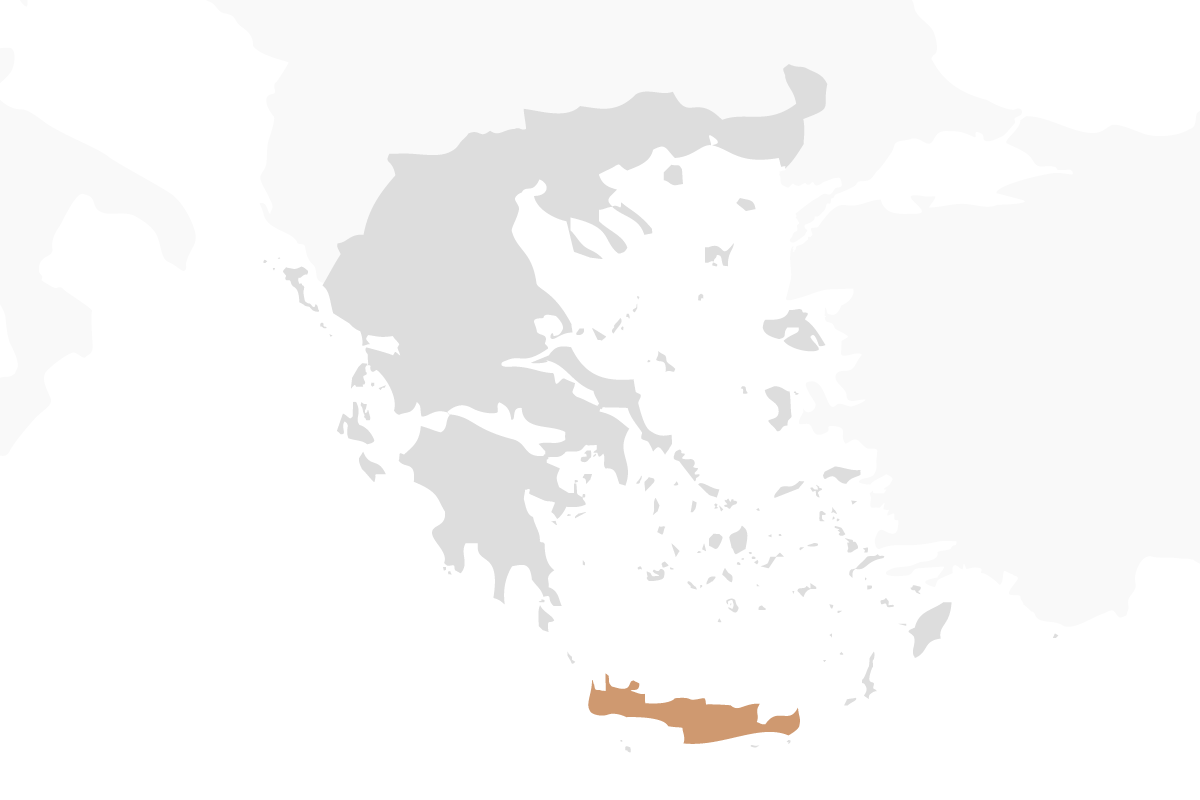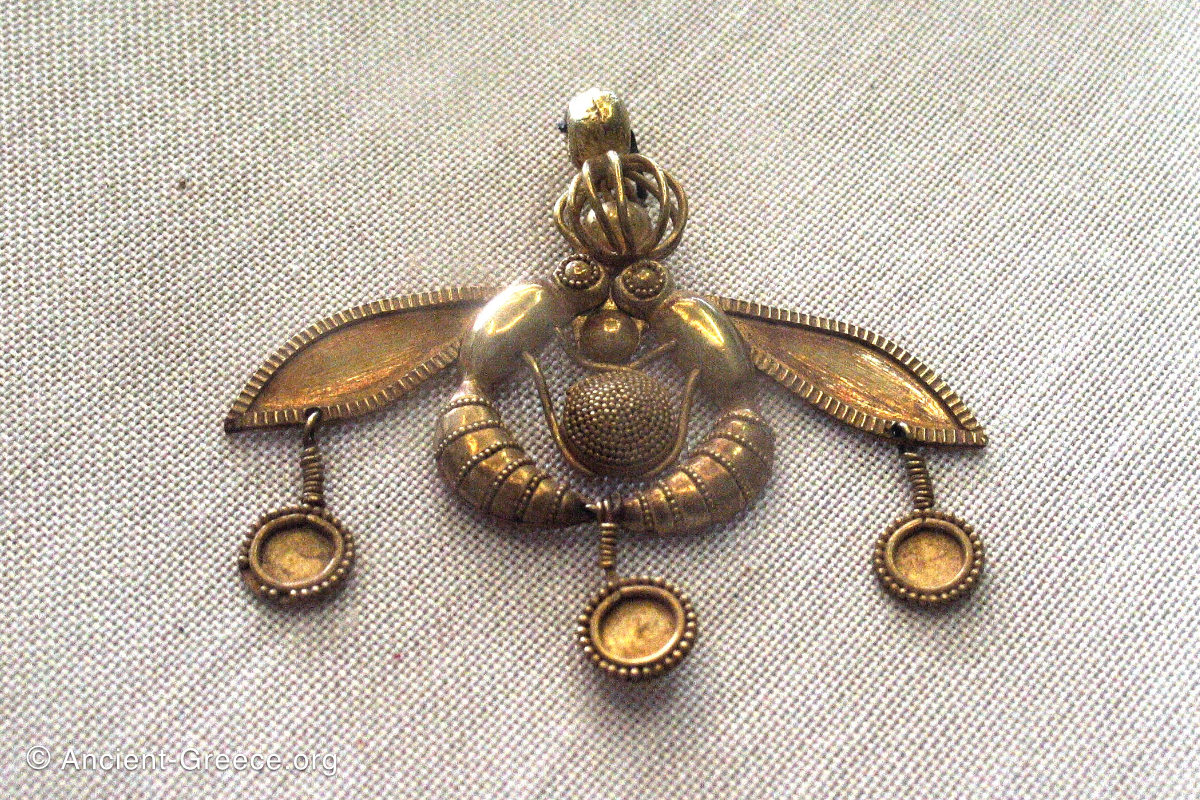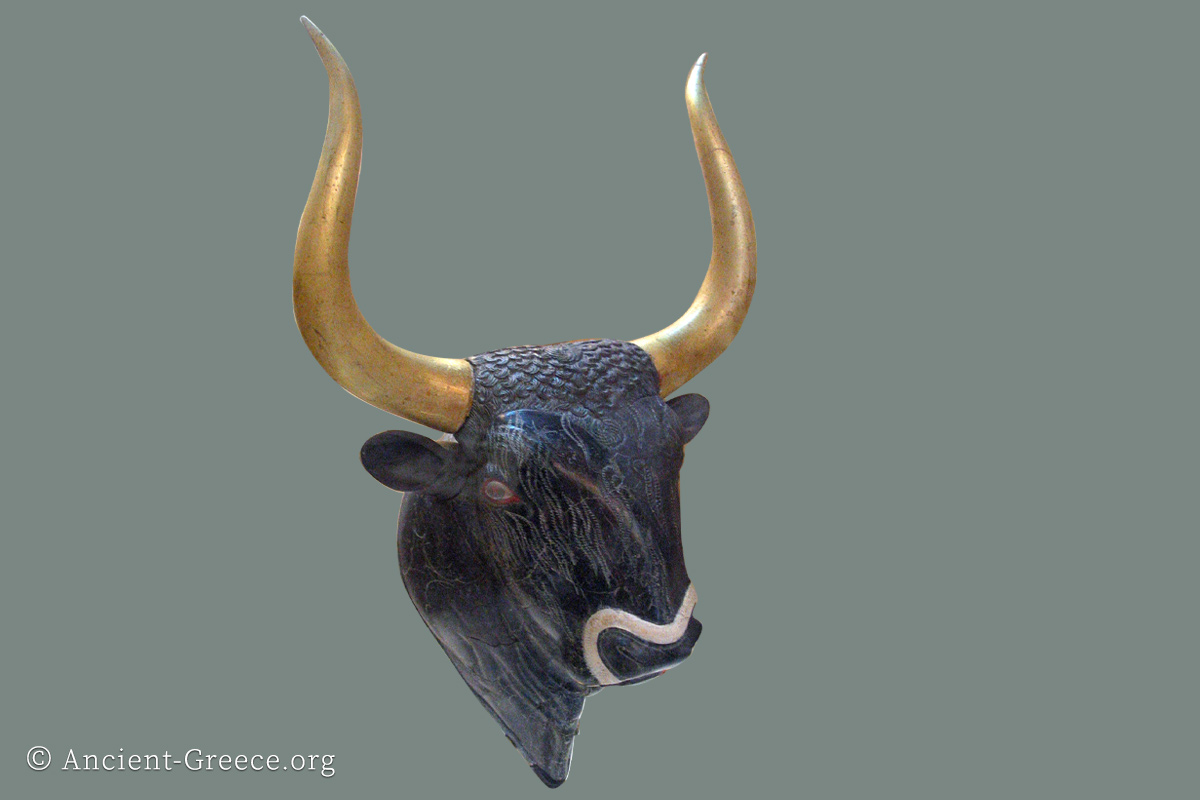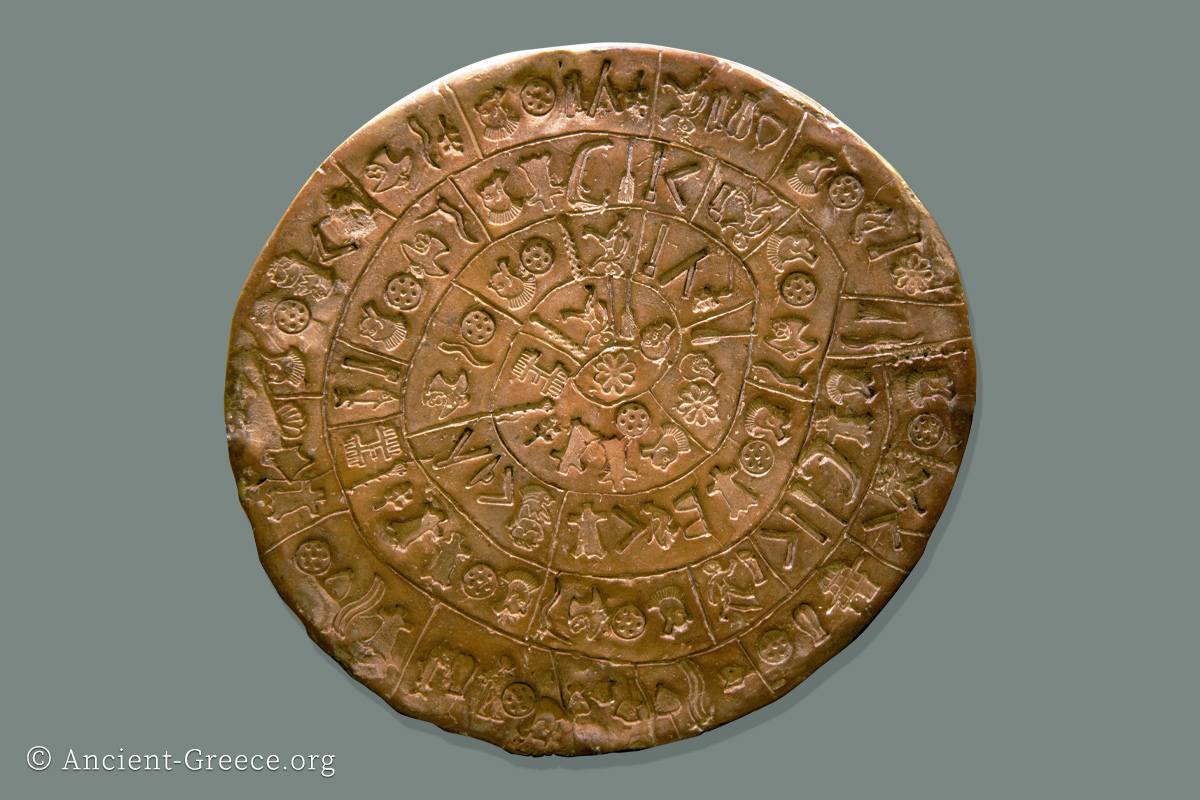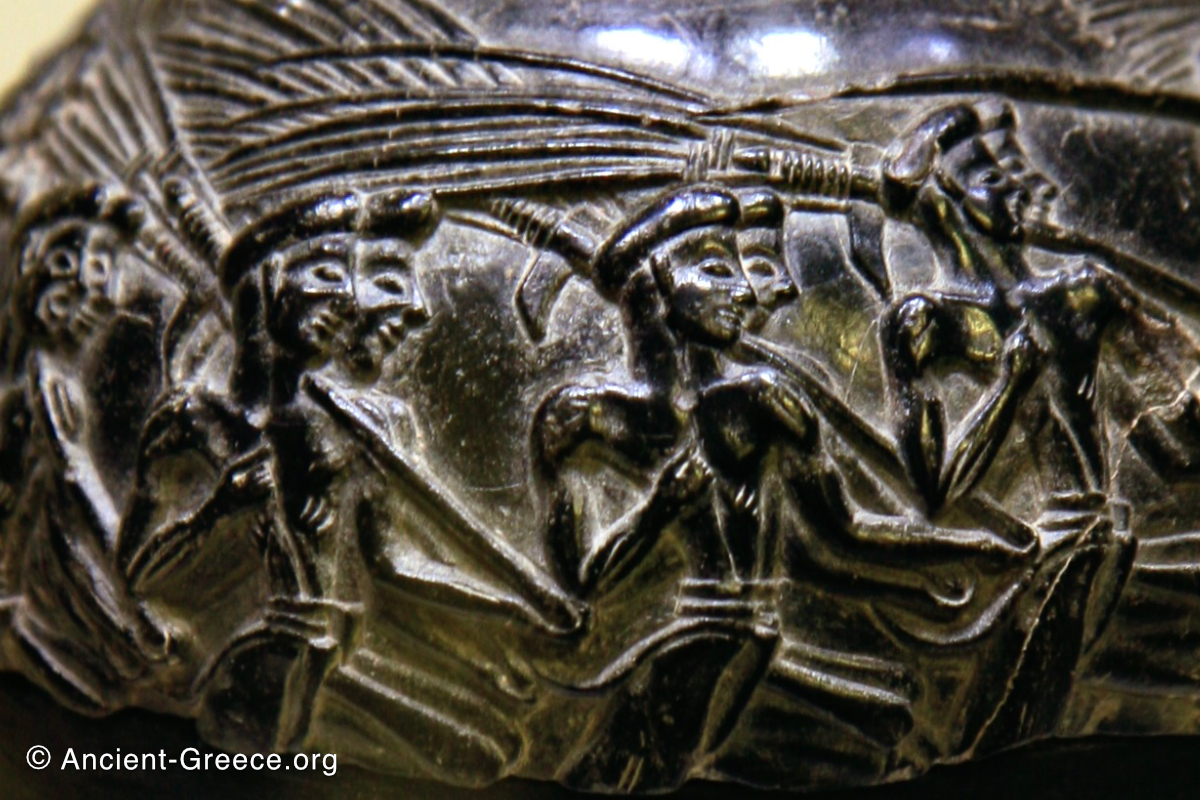
On this page:
A masterpiece of low relief sculpture
The Harvester Vase is a rhyton from Bronze Age Crete, Greece, unearthed in the Minoan villa known as Agia Triada. It was made of steatite, which is a green-brown soapstone, between 1500 and 1450 BCE.
A low relief depicting a group of workers walking to, or returning from olive harvest is carved on a continuous band across its face.
The overlapping bodies create an orderly unit of forms while the raised sticks (for shaking the olive trees) above their heads generate a band of chaotic rhythmic motion.
In a very small amount of space the artist masterfully created a sense of depth in depicting the ranks of the harvesters, and a feeling of motion with the repetition of the overlapping of heads and sticks.
It was originally gilded with gold hammered to paper-thin thickness (gold leaf).
Harvester Vase (or Harvester Rhyton), Steatite, 1500-1450 BCE.
While the composition is exquisite in itself, the facial expression of the figures is unique. The manifestation of human emotions in the faces of the figures has not been witnessed in the history of art prior to the Minoans, and the depiction of the face as the vehicle of human emotions reveals a people who were increasingly aware of the human condition and inner world.
The human being and his inner world as the center of attention, along with the importance of emotions became a central driving force during the later Classical and Hellenistic periods of ancient Greece. Eons later, during the Classical Greek period, concealment of emotions was of paramount importance in art as well as in life, while during the Hellenistic era robust exhibition of emotion in art was revered.
In this respect, the joyous harvesters from Agia Triada, provide a minute point of reference for the direction the cultural compass of western man was beginning to point towards: the direction inward towards one’s self.
Related Pages
